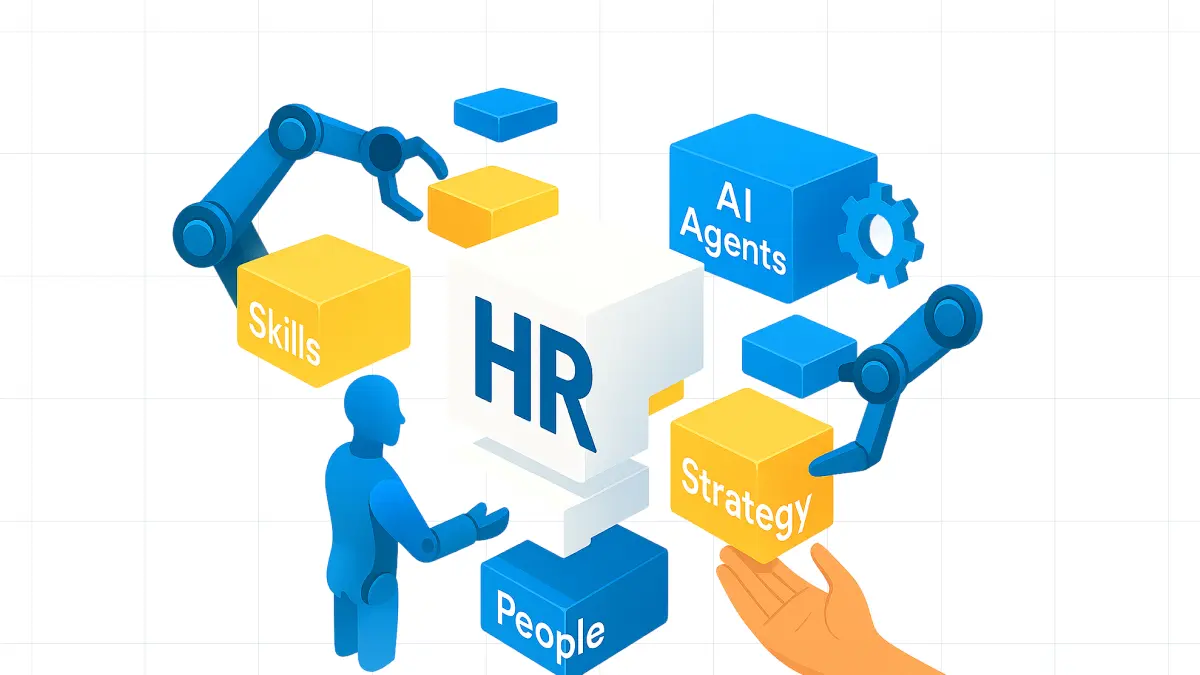In the employee experience tech stack, fragmentation is a common pain point.
You might be running engagement surveys in one system, performance reviews in another, and onboarding through a collection of calendars and docs. It works, until it doesn’t. Employees feel the friction. So do managers. And the HR team is often stuck in the middle.
As someone who regularly evaluates HR and people tools for fast-scaling and people-first organizations, I believe the best platforms aren’t the ones with the most features. They should be the ones managers will actually use, and their employees will actually feel.
That’s why I’m interested in Workleap, a modern HR platform that connects the entire employee experience, yet can also run independently or integrate with your existing systems thanks to its modular product offering.
In this article, I’ll break down Workleap’s key features, pricing, and where it fits best, so you can decide if it’s the right fit for your team.
Workleap Overview: A Modular Solution
According to Workleap’s own research, a staggering 75% of employees disengage or leave because of their manager. It’s no surprise that people teams today are stuck firefighting, from retention to performance, without the right tools or insights to support frontline leaders.
From that stance, Workleap (or Workleap Officevibe) offers a modular, people-first employee experience platform designed to simplify the way organizations engage, develop, and support their teams. It brings together six products under one umbrella:
- Officevibe – for engagement, feedback, and recognition
- Performance – for continuous reviews, OKRs, and manager 1-on-1s
- Pingboard – a visual org chart and directory
- LMS – a lightweight learning management system
- Onboarding – to streamline new hire ramp-up
- Skills – for tracking capabilities and internal growth opportunities
Each product can be used independently or as part of an integrated suite. This means you can just buy what’s missing in your current tech stack and continue having a centralized management and engagement space for your team.
With employee engagement and LMS being among their cornerstones, Workleap appears as a structured, professional, yet friendly and supportive communication channel between employees, managers, and HRs on performance, recognition, improvement, and development.
My first impression is that its admin sites are surprisingly simple and intuitive, which is important for an easy and straightforward implementation.

Workleap Pricing: Transparent and Surprisingly Flexible
First, pricing stands out as a key differentiator for Workleap. It is one of the few companies offering transparent quotes and competitive rates without setup fees.

Each product is priced individually, making it easy to start small and scale. Yet of course, it is more cost-effective to opt for a Total Experience Bundle, which provides access to everything for $12/user/month when billed annually.
It also offers a 28-day free trial if you sign up using the “get started free” button here.
Let’s take a closer look!
Officevibe for Engagement and Feedback
For many teams, Officevibe is the entry point into Workleap, and for good reason. It combines pulse surveys, anonymous feedback, eNPS tracking, and peer recognition into a lightweight, intuitive interface.
You get weekly check-ins with customizable questions, plus 10 core engagement metrics like recognition, wellness, and manager relationships. These are backed by science, with questions validated in collaboration with Deloitte.

A data-driven look at your employee engagement.
One standout feature is how Officevibe helps managers close the loop on feedback. It automatically structures your survey responses into trends, insights, and suggested talking points.
This matters when only 28% of low EX investment organizations report open communication between employees and managers, compared to 42% of high investment ones.
With this data-driven approach of Officevibe, it’s worth noting that this kind of solution is most useful when used consistently. In other words, you have to input enough consistent data for the system to return insightful and more accurate results.
It’s not about achieving perfection in every score, but about identifying issues early and fostering space for honest conversations, as I discussed as the first must-do for managing remote teams.
Performance: Lightweight Goal Tracking
Workleap’s Performance module focuses on continuous development rather than annual reviews. You can run structured check-ins, set and track OKRs, and document 1-on-1s—all in one place.
There’s nothing overly complex here, which is a strength. Managers can prepare for conversations with prebuilt templates and nudges based on past feedback. Employees can track their own goals and progress without chasing down updates across spreadsheets and docs.
For companies without a dedicated talent team, it provides just enough structure to drive accountability, without turning into a compliance-heavy system. It also allows you to create review cycles and automate announcements to employees.
And with research showing that companies investing in employee experience see 45% more improvement in goal-setting KPIs, getting the basics right matters more than ever.
It works best for teams who value regular development conversations and need help operationalizing them across managers of varying experience levels.
Pingboard: Clarity for Distributed and Scaling Teams
Pingboard, now part of Workleap since late 2023, is a visual org chart and directory tool that fills a practical gap for remote and growing teams.
It’s simple but effective: You can browse team structures, create private planning views for workforce changes, and use features like the “Who’s Who” game to help new hires learn names and roles faster. It also doubles as a central place to note birthdays, work anniversaries, and other milestones.

For companies struggling with visibility, especially during fast growth or in distributed settings, Pingboard can reduce onboarding confusion and streamline internal communication. It doesn’t replace your HRIS, but it can make it more accessible to everyone who needs quick context.
LMS for Internal L&D Courses and Materials
The LMS module offers a professional and effective study environment for your team members. It allows you to create courses, assign learning paths by role or department, and track completions.
As someone who designs course experience for FlexOS, I appreciate the advanced quiz modifications, versatile testing and grading options for members, and progress dashboards. Workleap also has AI in beta to help you generate HR content faster and more efficiently.

If you care about SCORM standards for your organization's training programs, there’s also an option for that.
I found it’s not an advanced LXP, but it’s not trying to be. Workleap is a good fit for companies that are getting serious about internal development and need something they can easily manage without a full L&D team.
Onboarding: Streamlined Journeys With Manager Support
Workleap’s onboarding module provides structure to what is often an inconsistent experience. You can build onboarding plans with tasks, content, and milestones, assign managers and buddies, and track completion in real time.
It integrates with popular HR and hiring platforms for mid-sized and remote companies (like Gusto, Workday, Hibob, BambooHR, Breathe HR, ChartHop, Factorial, Namely, etc), so you should easily transfer your employee information to and from.
What makes it more useful is how it supports managers. They can see exactly where their new hire is in the onboarding journey, what’s been completed, what’s overdue, and what’s coming next.
Workleap also sends automatic weekly summaries, helping managers stay on top of their responsibilities without needing reminders from HR. Combined with automation that assigns tasks like intro meetings or training sessions, it removes the guesswork and could contribute to lower first-week drop-offs.
Skills Development and Growth Planning
Skills is Workleap’s take on career development and internal growth. It allows HR teams to build custom skill frameworks aligned to roles or departments, provide personalized development plans and materials, and give employees the ability to self-assess their capabilities.
Managers can also assess their team members, helping to highlight skill gaps and potential development opportunities. At this point, there will be AI suggesting what’s relevant and generating program drafts for you.

The goal isn’t to create a rigid matrix, but to make growth conversations easier to start and easier to act on. Employees can see what’s expected of them in current or future roles, and organizations get clearer visibility into where upskilling or mentorship may be needed.
For HR teams focused on internal mobility, retention, or succession planning, this module adds structure to what’s often an informal or inconsistent process.
It’s still newer compared to other parts of Workleap, but the foundations are already practical for teams ready to build a more intentional growth culture.

Workleap also supports internal mobility by giving visibility to open roles (for employees) and available skills (for managers).

Workleap Final Verdict: A Practical Platform for People-First Teams
Workleap isn’t trying to be everything, and that’s what makes it work. For HR and operations teams looking to improve employee engagement, development, and onboarding without layering in complexity, it offers a clean, modular approach that’s easy to roll out and easy to maintain.
The platform does have limitations. It’s not a full HRIS—there’s no payroll, benefits, or deep compliance tooling—and larger enterprises may outgrow its flexibility in areas like customization or integrations. Yet, there are integrations as a workaround if you still want to leverage just some of Workleap’s products.

Besides that, it delivers real value to the managers who need better ways to run 1-on-1s, the HR leads trying to spot engagement issues before they become attrition, and the growing teams that just want to get onboarding right.
Workleap also deserves credit for its direction. Features like its integrated AI, even still in early stages, signal an intent to simplify even further, surfacing insights and improving workflows without overwhelming users.
If your team is scaling, navigating hybrid challenges, or just tired of patchwork tools, Workleap is a worthy addition to your people stack.
Start small with one module, or roll out the full suite. Either way, you’ll likely find that “friendly” isn’t just a brand promise, it’s a feature.
























